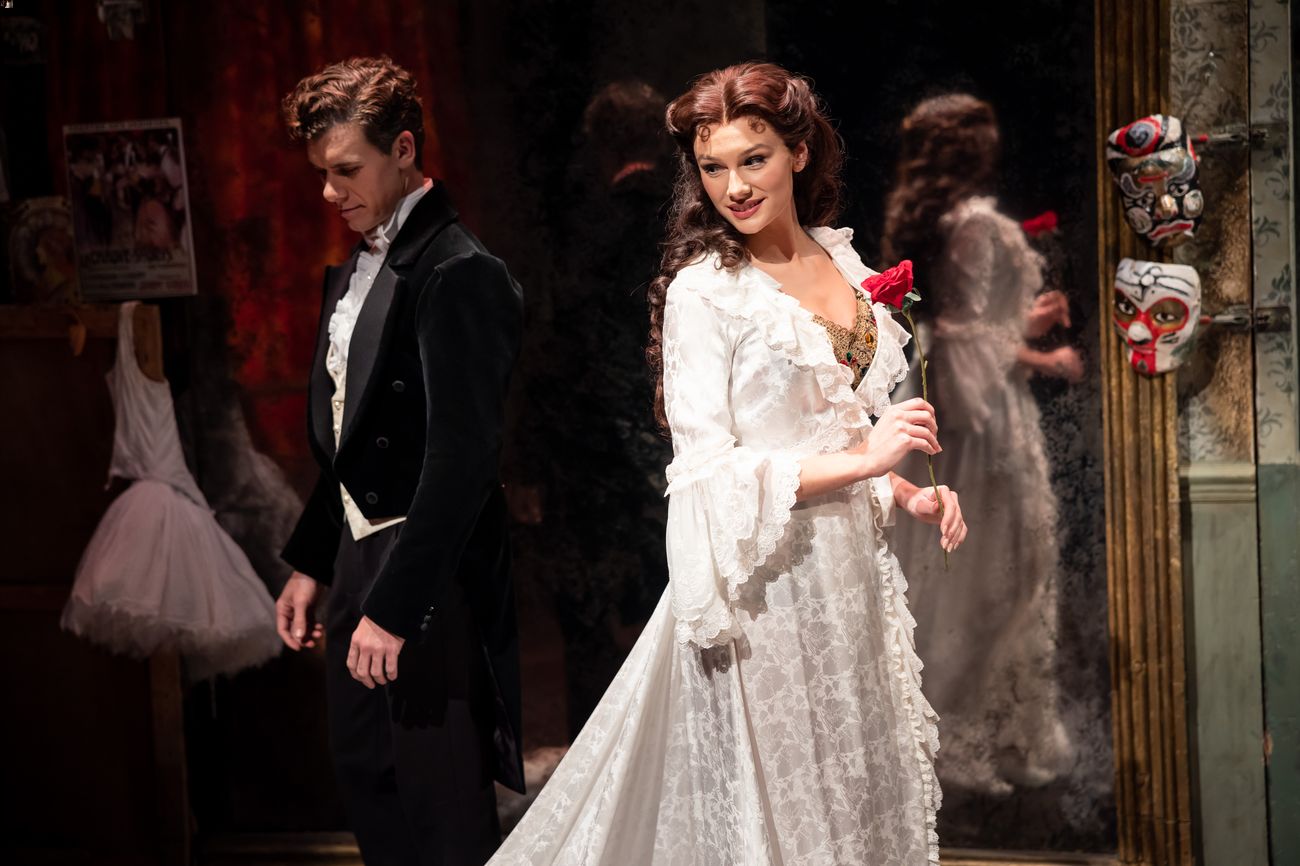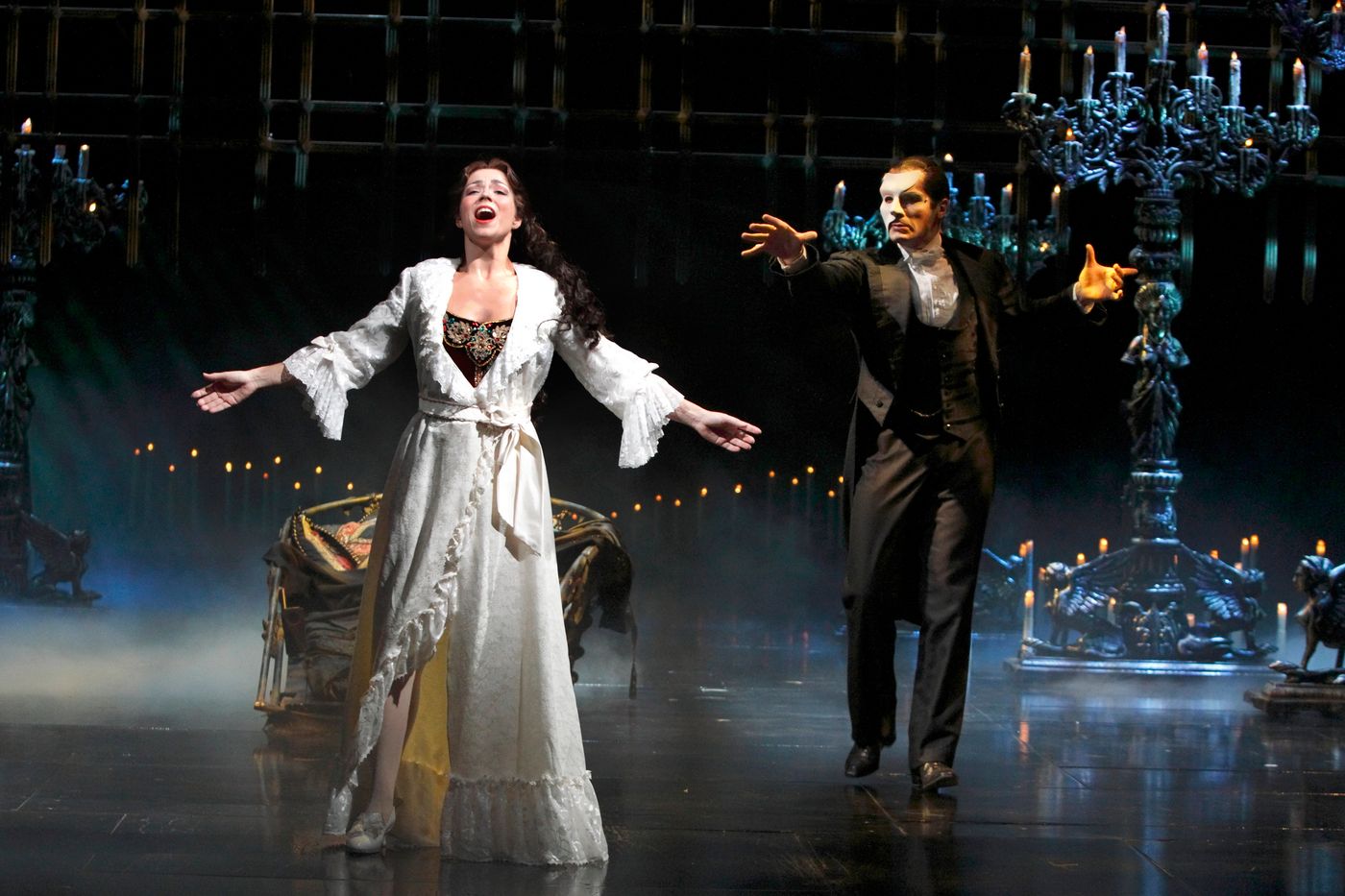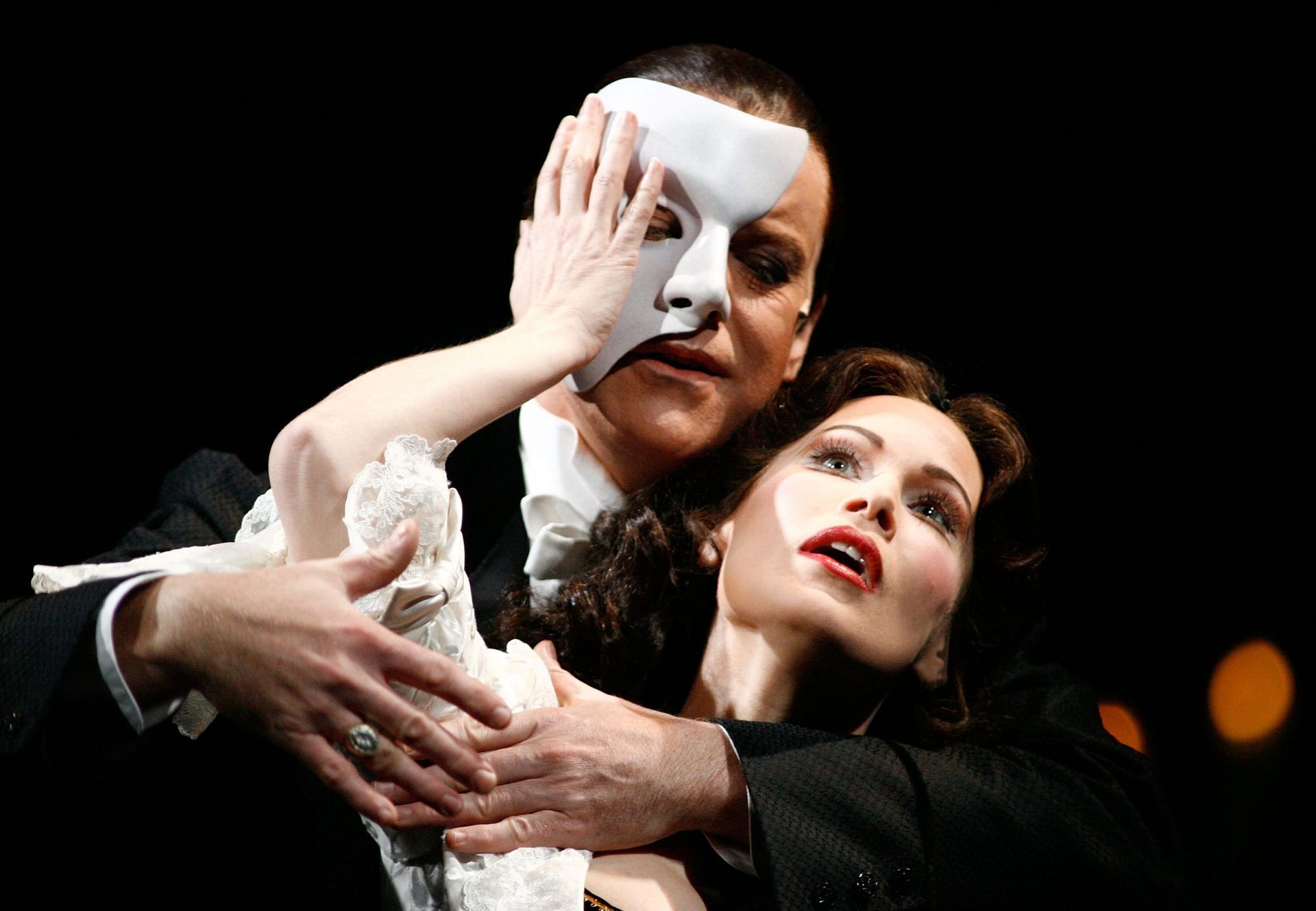Home>Events & Info>Opera>What Does The Phantom Of The Opera Look Like


Opera
What Does The Phantom Of The Opera Look Like
Modified: January 22, 2024
Discover the mystery of the Phantom of the Opera and unveil his enigmatic appearance. Explore the iconic opera character and his haunting allure.
(Many of the links in this article redirect to a specific reviewed product. Your purchase of these products through affiliate links helps to generate commission for AudioLover.com, at no extra cost. Learn more)
Table of Contents
Introduction
The Phantom of the Opera, a timeless tale of love, mystery, and music, has captivated audiences for over a century. Originally written by French author Gaston Leroux, the story has been adapted into various forms, including novels, films, stage productions, and even a beloved musical.
One of the most intriguing aspects of the Phantom of the Opera is the elusive presence of its central character, simply known as the Phantom. While the story explores many themes, it is the phantom’s appearance that has often piqued the curiosity of fans and critics alike. Throughout the years, numerous interpretations and depictions of the Phantom have emerged, leaving audiences wondering, “What does the Phantom of the Opera really look like?”
In this article, we will delve into the origins of the Phantom of the Opera and trace the evolution of his appearance from the pages of Leroux’s novel to the stages and screens around the world. We will explore the various descriptions of the Phantom’s appearance and the iconic mask that has come to define him. Ultimately, we will delve into the question of whether the Phantom should be depicted as a human or a monster, and how different adaptations have presented this complex character.
So, if you’re ready to dive into the world of the Phantom of the Opera and uncover the secrets behind his mysterious appearance, join us as we journey through the captivating story and explore the many faces of this iconic character.
The Origins of the Phantom of the Opera
The story of the Phantom of the Opera originated from the imagination of French author Gaston Leroux. Published as a novel in 1910, Leroux’s work introduced readers to the haunting tale set in the Paris Opera House. The novel blends elements of romance, mystery, and the supernatural, captivating readers with its eerie atmosphere and compelling characters.
Leroux drew inspiration from real-life events and rumors surrounding the Paris Opera House during the 19th century. Intrigued by the hidden tunnels, secret passageways, and mysterious occurrences in the opera house, Leroux wove these elements into his narrative, creating a chilling tale of a disfigured musical genius who haunts the building.
The character of the Phantom, also known as Erik, is said to have been influenced by various individuals, including a violinist named Jean-Marc Jéhan, who was known for his unusual appearance and reclusive nature. Leroux’s inventive mind took these inspirations and crafted a character who became a symbol of darkness, passion, and tragedy.
Little is known about the Phantom’s past or true identity, adding to the allure of the character. According to Leroux’s novel, the Phantom was born with a facial deformity and spent his early years in a traveling circus. Due to his appearance, he was shunned and treated as an outcast. It is this sense of rejection and isolation that fuels the Phantom’s thirst for acceptance and love.
Throughout the novel, the Phantom’s desire for the beautiful opera singer Christine Daaé drives the plot forward, creating a captivating love triangle between the Phantom, Christine, and her childhood friend and suitor, Raoul. The Phantom’s relentless pursuit of Christine and his willingness to go to extreme measures to win her love form the backbone of the story.
With its blend of mystery, romance, and tragedy, Leroux’s novel set the stage for the iconic character of the Phantom of the Opera. As the story gained popularity, it would go on to inspire numerous adaptations, each with their own interpretations of the Phantom’s appearance.
The Legend of the Phantom’s Appearance
The legend surrounding the appearance of the Phantom of the Opera has been a subject of fascination and speculation for years. Gaston Leroux’s novel provides limited descriptions, leaving much to the imagination of readers. This ambiguity has allowed for various interpretations of the Phantom’s physical features, resulting in a wide range of portrayals in different adaptations.
In Leroux’s novel, the Phantom is described as having a “death’s head” or skull-like face, with sunken eyes and a nose resembling a beak. His skin is said to be ghostly white, and his overall appearance is described as terrifying. He is depicted as a figure of darkness and mystery, hiding his disfigurement beneath a mask.
However, it is important to note that the novel does not provide a detailed physical description of the Phantom. Instead, it focuses more on his actions, emotions, and the impact he has on the other characters in the story. This lack of specificity regarding his appearance has allowed for various interpretations in different adaptations.
Over the years, the Phantom has been portrayed with a range of physical features, each emphasizing different aspects of his character. Some adaptations have portrayed him as a more sympathetic figure, showcasing his vulnerability and humanity beneath the mask. In these interpretations, the disfigurement is often less severe, with the emphasis placed on his emotional turmoil rather than his physical appearance.
In contrast, other adaptations have leaned towards a more monstrous depiction of the Phantom, emphasizing his dark and sinister nature. These portrayals often highlight his deformities, with exaggerated features and horrifying prosthetics. This interpretation aligns more closely with the original description in Leroux’s novel and plays up the Phantom’s role as a mysterious and terrifying figure.
Ultimately, the legend of the Phantom’s appearance is a subjective one, open to the interpretation of directors, actors, and audiences. Each portrayal brings a unique perspective to the character, shedding light on different facets of his complex personality.
Whether depicted as a tragic figure seeking love and acceptance or as a malevolent force driven by obsession, the Phantom of the Opera continues to captivate audiences with his enigmatic presence. His appearance, be it haunting or sympathetic, is an integral part of the legend that has made him a timeless and iconic character in literature and the performing arts.
Descriptions from Gaston Leroux’s Novel
In Gaston Leroux’s novel, “The Phantom of the Opera,” the descriptions of the Phantom’s appearance are shrouded in mystery and ambiguity. Leroux provides glimpses into the physical attributes of the character, leaving much to the interpretation of the reader.
The most defining feature of the Phantom’s appearance is his disfigurement. Referred to as a “death’s head” or a skull-like face, he is described as having sunken eyes and a nose that resembles a beak. These descriptions evoke a sense of horror and contribute to the Phantom’s reputation as a fearsome and haunting figure.
His skin is described as ghostly white, emphasizing his otherworldly presence. This pallor adds to the air of mystery surrounding the character, further heightening the sense of unease elicited by his presence in the opera house.
As an outcast from society, the Phantom takes great care to hide his disfigurement from the world. He conceals his face beneath a mask, which is initially described as being made of wax. The mask serves as a symbol of his desire to remain hidden and maintain a level of anonymity, allowing him to operate behind the scenes without revealing his true identity.
While Leroux’s novel does not provide a comprehensive physical description, it focuses more on the emotional and psychological aspects of the Phantom’s character. His intense passion for music and his immense talent are explored in great detail, giving readers a glimpse into the torment and desperation that drive him.
This lack of a comprehensive physical description allows for various interpretations of the Phantom’s appearance in adaptations. It leaves room for imagination and allows actors, directors, and audiences to envision and interpret the character in their own way.
Despite the ambiguity, the descriptions from Leroux’s novel lay the foundation for the enduring image of the Phantom of the Opera. His disfigurement, his ghostly pallor, and his elusive nature intertwine to create a captivating and enigmatic character, forever etched in the annals of literature and theater.
Portrayals in Various Adaptations
Over the years, the character of the Phantom of the Opera has been brought to life in numerous adaptations, each presenting their own interpretation of his appearance. From stage productions to films and television adaptations, the portrayal of the Phantom has evolved and varied, showcasing different facets of his complex personality.
One of the most iconic adaptations is Andrew Lloyd Webber’s musical, “The Phantom of the Opera.” In this stage production, the Phantom is often depicted with a hauntingly pale complexion and disfigured face, adhering closely to Gaston Leroux’s original descriptions. The emphasis is on the Phantom’s anguish and vulnerability, allowing audiences to empathize with his unrequited love for Christine while still recognizing his darker and more troubled nature.
In Joel Schumacher’s film adaptation of the musical, the Phantom, portrayed by Gerard Butler, is given a more rugged and intense appearance. While still maintaining the disfigurement, the film emphasizes the Phantom’s tortured soul, adding depth to his character. The physical scars are more prominent, acting as a visual representation of the emotional scars he carries.
Other adaptations have taken a different approach to the Phantom’s appearance. In the 1925 silent film adaptation, directed by Rupert Julian, Lon Chaney Sr. famously portrayed the Phantom with a grotesque and horrifying mask, showcasing his mastery of makeup effects. This interpretation leans more towards the monstrous portrayal of the character, focusing on his ability to strike fear in the hearts of those around him.
Some adaptations, such as the 2004 film “The Phantom of the Opera” directed by Dario Argento, have taken creative liberties with the character’s appearance. In this version, the Phantom is depicted with a more romanticized and seductive appearance, emphasizing his allure and charm rather than his intimidating nature.
Each adaptation offers a unique and subjective interpretation of the Phantom’s appearance, emphasizing different aspects of his complex character. The variations in physical portrayal reflect the multifaceted nature of the Phantom, showcasing his capacity for both darkness and vulnerability.
Through these diverse portrayals, the Phantom of the Opera continues to captivate audiences and maintain his status as one of literature’s most intriguing and enduring characters.
The Phantom’s Iconic Mask
One of the most recognizable and iconic elements associated with the Phantom of the Opera is his mask. In Gaston Leroux’s novel, the Phantom conceals his disfigured face behind a mask made of wax. This mask serves as a symbol of his desire to remain hidden from the world, preserving his anonymity while he orchestrates the events at the Paris Opera House.
Throughout various adaptations, the mask has taken on different forms, each contributing to the characterization of the Phantom. In some interpretations, the mask is crafted with meticulous detail, molded to resemble a distorted face, accentuating the Phantom’s disfigurement and adding to the sense of horror and intrigue.
In other adaptations, the mask is portrayed as a more delicate and ornate accessory, created with elegance and sophistication. These versions highlight the Phantom’s artistic and creative side, paying homage to his passion for music and the arts.
The significance of the mask extends beyond its physical presence. It acts as a metaphor for the Phantom’s dual nature, representing the conflict between his desire for love and acceptance and his feelings of resentment and isolation. The mask becomes a tool for the Phantom to hide his true self, presenting a façade to the world while concealing his inner turmoil.
Furthermore, the mask plays a crucial role in the relationship between the Phantom and Christine. It becomes a symbol of the Phantom’s control over her, as he requires her to wear a matching mask during their private encounters. This mask serves as a visual reminder of the power dynamic between them, illustrating his dominance over her and the manipulation inherent in their relationship.
Ultimately, the Phantom’s iconic mask represents his quest for identity, acceptance, and love. It encapsulates the duality of his character and the complexity of his emotions. Whether portrayed as a menacing facade or a symbol of tragic beauty, the mask remains a powerful and enduring symbol of the Phantom of the Opera.
Human or Monster: Depicting the Phantom’s Face
The question of whether to depict the Phantom of the Opera as a human or a monster is a fundamental debate that arises in every adaptation. This decision has a significant impact on how the character is perceived and understood by the audience.
Some adaptations choose to portray the Phantom as a sympathetic and tragic character, highlighting his humanity beneath the disfigurement. In these interpretations, the focus lies on the inner struggles, desires, and vulnerabilities of the Phantom. By presenting him as more human, with complex emotions and motivations, the audience is encouraged to empathize with his plight.
These adaptations often emphasize the idea that love and acceptance could have redeemed the Phantom, had he not been subjected to a lifetime of rejection and isolation. By humanizing the character, the narrative explores themes of redemption, forgiveness, and the power of compassion.
On the other hand, some adaptations choose to lean into the Phantom’s darker and more monstrous aspects. These portrayals reinforce the idea of the Phantom as a dangerous and vengeful force, motivated by obsession and an insatiable desire for control.
These interpretations heighten the sense of mystery, awe, and fear surrounding the character. By presenting the Phantom as more of a monster, the narrative explores themes of power, the consequences of unchecked ambition, and the destructive nature of possessive love.
Ultimately, the decision to depict the Phantom as a human or a monster comes down to the interpretation of the director and creative team. Each approach offers a distinct perspective on the character, shaping the audience’s perception and emotional connection to the story.
Regardless of the chosen depiction, what remains consistent is the enduring fascination with the complexities and contradictions of the Phantom’s character. His duality as both a tortured soul and a menacing figure continues to captivate audiences and spark conversations about the nature of love, identity, and the depths of human emotion.
Whether human or monster, the Phantom of the Opera remains an enigmatic and iconic presence, leaving an indelible mark on the world of literature and entertainment.
Conclusion
The Phantom of the Opera, with its tale of love, mystery, and music, has enraptured audiences for over a century. Central to the allure of this captivating story is the enigmatic and elusive appearance of the Phantom himself. From Gaston Leroux’s original descriptions to the myriad of interpretations in adaptations, the Phantom’s appearance has sparked much intrigue and debate.
Throughout the years, the various adaptations have presented different interpretations of the Phantom’s physical features, oscillating between a sympathetic portrayal of his humanity or emphasizing his monstrous nature. These choices have shaped our understanding of the character and influenced the way we connect with the story.
The Phantom’s iconic mask adds another layer of complexity to his depiction, symbolizing his desire for anonymity and reflecting the internal conflicts he faces. The mask becomes a visual representation of the dichotomy between love and darkness, vulnerability and manipulation.
Ultimately, whether depicted as a disfigured yet tormented human or a fearsome and vengeful monster, the Phantom of the Opera continues to captivate audiences’ imaginations. His complex character, marked by isolation, passion, and unrequited love, resonates with our own desires for acceptance and connection.
What truly defines the Phantom is not his physical appearance, but rather his emotional depth, inner turmoil, and the choices he makes in the pursuit of love. Each adaptation offers a fresh perspective on this timeless character, allowing us to explore different dimensions of his personality and motivations.
The enduring appeal of the Phantom of the Opera lies in its ability to touch our hearts, provoke our imagination, and explore the intricacies of human emotions. It reminds us that behind the masks we wear, both literal and metaphorical, lies a complex and multi-faceted individual capable of great love, pain, and redemption.
So, as we continue to immerse ourselves in the enchanting world of the Phantom of the Opera, let us appreciate the artistic freedom and creativity that come with depicting his appearance. Whether human or monster, sympathetic or menacing, it is the power of the character’s story and the impact it has on our hearts and minds that truly matters.











